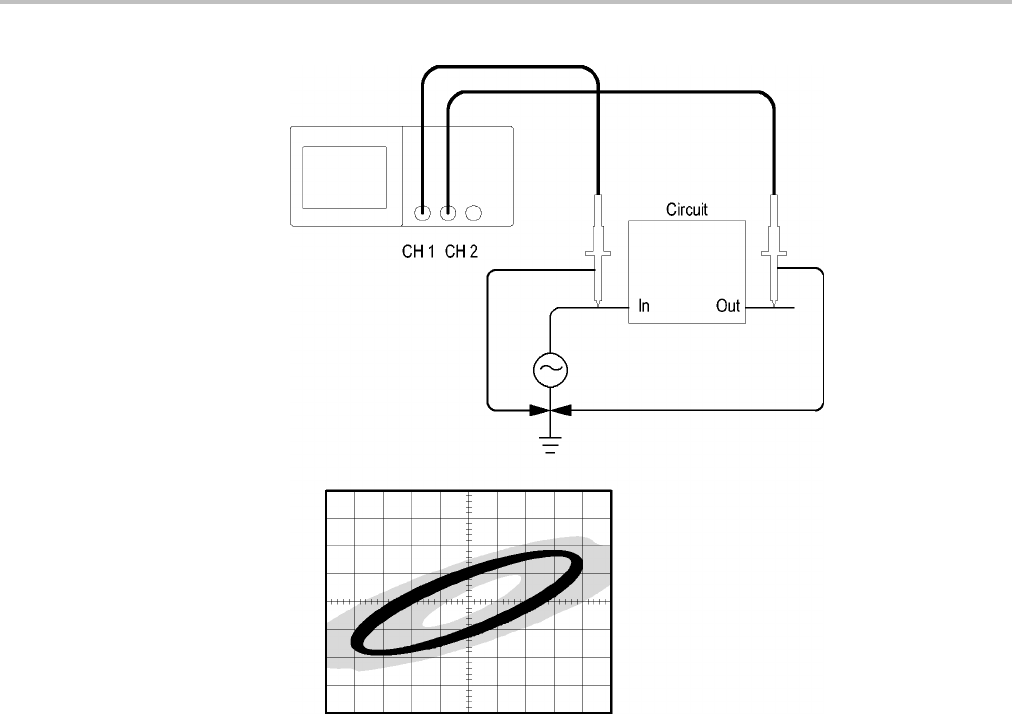User manual
Table Of Contents
- toc
- General safety summary
- Compliance Information
- Preface
- Getting Started
- Operating Basics
- Understanding Oscilloscope Functions
- Application Examples
- Taking Simple Measurements
- Using Autorange to Examine a Series of Test Points
- Taking Cursor Measurements
- Analyzing Signal Detail
- Capturing a Single-Shot Signal
- Measuring Propagation Delay
- Triggering on a Specific Pulse Width
- Triggering on a Video Signal
- Analyzing a Differential Communication Signal
- Viewing Impedance Changes in a Network
- Data Logging
- Limit Testing
- Math FFT
- USB Flash Drive and Device Ports
- USB Flash Drive Port
- File Management Conventions
- Saving and Recalling Files With a USB Flash Drive
- Using the Save Function of the Print Front Panel Button
- USB Device Port
- Installing the PC Communications Software on a PC
- Connecting to a PC
- Connecting to a GPIB System
- Command Entry
- Connecting to a Printer
- Printing a Screen Image
- Reference
- Appendix A: Specifications
- Appendix B: TPP0101 and TPP0201 Series 10X Passive Probes Inform
- Appendix C: Accessories
- Appendix D: Cleaning
- Appendix E: Default Setup
- Appendix F: Font Licenses

Application Examples
To view the input and output of the circuit in an XY display, follow th
ese steps:
1. Push the 1 (channel 1 menu) button.
2. Push Probe ► Voltage ►Attenuation ► 10X.
3. Push the 2 (channel 2 menu) button.
4. Push Probe ► Vo lt age ► Attenuation ► 10X.
5. If using P2220 probes, set their s witches to 10X.
6. Connect the channel 1 probe to the input of the network, and connect the
channel 2 probe to the output.
7. Push the AutoSet button.
8. Turn the Vertical Scale (volts/division) knobs to display approximately the
same amplitude signals on each channel.
9. Push the Display but
ton to see the Display Menu.
10. Push Format ► XY.
The o scilloscope displays a Lissajous pattern representing the input and
output characteristics of the circuit.
TBS1000 Series Oscilloscopes User Manual 51










